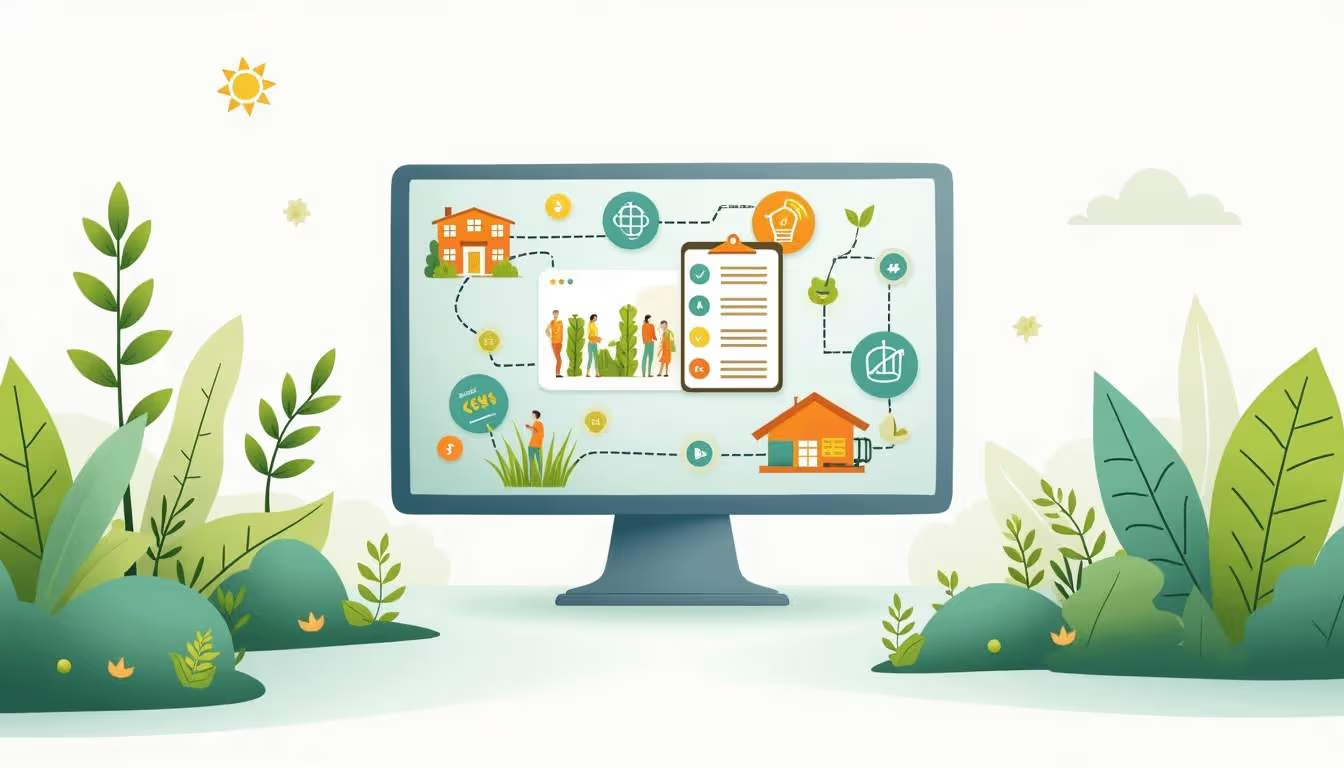Top Landscaping Business Management Software Solutions for 2025
The landscaping industry is experiencing dynamic growth and transformation, fueled by increasing consumer demand, technological innovation, and evolving environmental priorities. With the U.S. landscaping market valued at $153 billion in 2024 and the global market projected to reach over $528 billion by 2035, landscaping businesses are under pressure to optimize operations, enhance customer service, and scale efficiently. In this competitive landscape, leveraging the right business management software is no longer optional—it’s essential.
For landscaping companies—most of which are small businesses with fewer than 50 employees—the right software can streamline scheduling, invoicing, crew management, and marketing efforts, while also integrating eco-friendly and sustainable practices that customers increasingly expect. This article explores the top landscaping business management software solutions for 2025, highlighting their key features, benefits, and why they matter in today’s market.
Why Landscaping Businesses Need Specialized Management Software
The landscaping services industry is growing at a robust 6% compound annual growth rate (CAGR) between 2020 and 2025, signaling healthy demand and expanding opportunities. However, this growth also brings challenges such as managing complex projects, coordinating crews in the field, and responding to customer expectations for sustainability and innovation.

Approximately 93% of landscaping companies already utilize digital tools for operations, underscoring the critical role technology plays in business success. These tools help companies reduce administrative overhead, improve accuracy in billing and scheduling, and provide customers with seamless communication channels. Furthermore, with the rise of eco-friendly landscaping solutions—growing by over 30% since 2018—software that supports sustainable project planning and resource management is becoming increasingly valuable.
Key Challenges Addressed by Landscaping Software
- Operational Efficiency: Automating scheduling, dispatching, and invoicing reduces manual errors and saves time.
- Customer Relationship Management (CRM): Keeping track of client preferences, service history, and communications enhances satisfaction and retention.
- Financial Management: Real-time job costing, budgeting, and revenue tracking help businesses stay profitable.
- Mobile Accessibility: Field crews benefit from mobile apps that provide job details, capture signatures, and update progress on the go.
- Eco-Friendly Planning: Tools that facilitate drought-tolerant landscaping, xeriscaping, and native plant selection align with market trends.
Moreover, the integration of specialized management software allows landscaping businesses to harness data analytics for better decision-making. By analyzing trends in customer preferences and service performance, companies can tailor their offerings to meet the evolving needs of their clientele. This data-driven approach not only enhances service delivery but also fosters a proactive stance in anticipating market shifts, ensuring that businesses remain competitive in a rapidly changing environment.
Additionally, the ability to manage multiple projects simultaneously through a centralized platform streamlines communication between office staff and field teams. This cohesion is vital in ensuring that everyone is on the same page regarding project timelines, resource allocation, and client expectations. As a result, landscaping companies can deliver high-quality services consistently, which is essential for building a strong reputation and securing repeat business in an industry where word-of-mouth referrals are invaluable.
Top Landscaping Business Management Software Solutions for 2025
Choosing the right software depends on the size of the business, service offerings, and growth ambitions. The following platforms are industry leaders, offering comprehensive features tailored to landscaping companies of all sizes.

Emerging Trends Influencing Landscaping Software in 2025
Beyond core management features, landscaping software in 2025 must adapt to several important industry trends that shape how companies operate and compete.
Sustainability and Eco-Friendly Solutions
The demand for sustainable landscaping has surged by over 30% since 2018, with drought-tolerant landscapes increasing by 45% in 2022 alone. Software that facilitates the planning and management of native grasses, xeriscaping, and water-efficient designs is becoming indispensable.
Platforms that incorporate environmental impact tracking or integrate with databases of native plants and sustainable materials help businesses differentiate themselves and meet customer expectations. This trend is closely tied to the growing adoption of xeriscaping, which is projected to grow by 15% annually through 2025.
Automation and Robotics Integration
The use of automated and robotic lawn mowers has grown by 25% annually since 2019, signaling a shift toward technology-driven lawn care. Landscaping software that supports integration with these devices can optimize scheduling and maintenance routines, reducing labor costs and improving consistency.
As automation becomes more prevalent, software platforms that offer real-time monitoring and control of robotic equipment will provide a competitive edge.
Mobile-First and Cloud-Based Solutions
With over 90% of landscaping companies in the U.S. being small businesses with fewer than 50 employees, mobile accessibility is critical. Field crews need instant access to schedules, job details, and client information from their smartphones or tablets.
Cloud-based software ensures data is synchronized across teams and devices, enabling seamless communication between office staff and field workers. This mobility enhances responsiveness and reduces errors, contributing to higher customer satisfaction.
Choosing the Right Software for Your Landscaping Business
Selecting the ideal business management software requires careful consideration of your company’s size, service offerings, and growth plans. Here are key factors to evaluate:
Feature Set and Customization
Ensure the software covers essential functions such as scheduling, invoicing, CRM, and reporting. If your business offers specialized services like hardscaping or eco-friendly landscaping, look for platforms that support these niches.
Ease of Use and Training
Adoption is critical. Choose software with an intuitive interface and strong customer support to minimize downtime and training costs.
Integration Capabilities
Check for compatibility with accounting software, marketing tools, and emerging technologies like robotic mowers. Integration reduces data silos and streamlines workflows.
Scalability
Your software should grow with your business. Platforms that support multi-location management and advanced reporting will serve you better as you expand.
Cost and ROI
Consider subscription fees, implementation costs, and potential productivity gains. Remember that approximately 65% of landscaping companies report increased revenue with the right operational tools, highlighting the value of investing wisely.
Conclusion
The landscaping industry is thriving, with expanding markets and evolving customer preferences driving demand for innovative, efficient, and sustainable services. As the sector grows—projected to reach a global value of $528.59 billion by 2035—landscaping businesses must leverage technology to stay competitive and profitable.

Business management software tailored to landscaping operations is a critical enabler of this success. Platforms like Jobber, LMN, Aspire, Service Autopilot, and Arborgold offer comprehensive solutions that streamline operations, enhance customer relationships, and support eco-friendly practices.
By embracing these tools and aligning with industry trends such as sustainability, automation, and mobile accessibility, landscaping companies can position themselves for continued growth and profitability in 2025 and beyond.








